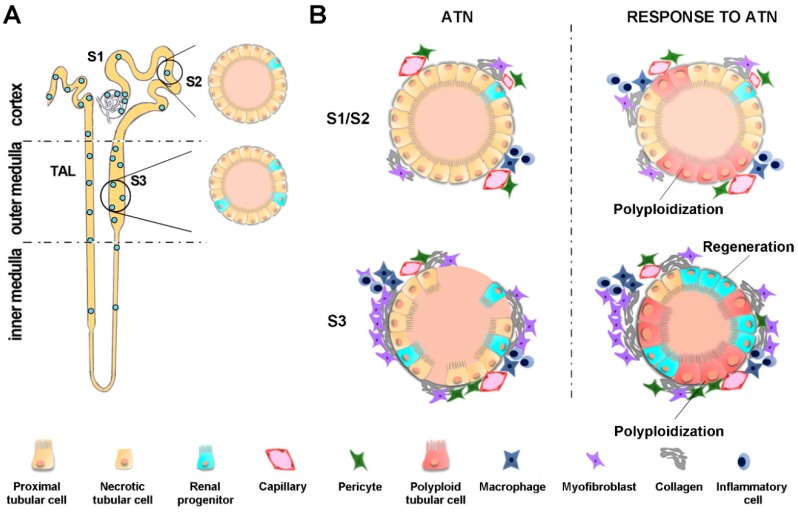Figure 2.
A new pathophysiological interpretation of tubular response to AKI leading towards CKD: The proliferation of renal progenitors and polyploidization of tubular cells. (A) Schematic localization of renal progenitors scattered along the S1–S2 segment, the S3 segment, and thick ascending limb (TAL) in the nephron. (Figure modified from Lazzeri et al., Trends Mol Med, 2019); (B) Top: In the uninjured proximal tubule S1–S2 segment, tubular epithelial cells enhance their working capacity by entering the cell cycle to increase their DNA content without division, resulting in polyploid tubular cells (i.e., polyploidization). Bottom: In the necrotic proximal tubule S3 segment, renal progenitors proliferate and complete cell division to drive regeneration, while the remnant tubular epithelial cells undergo polyploidization rather than mitosis. ATN: Acute tubular necrosis.

